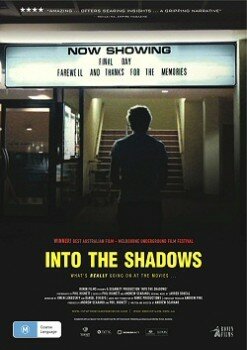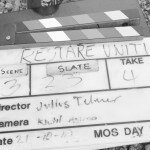Australians don’t like seeing Australian films. Sadly, that’s been the general consensus by the critics and public alike for some time, and now figures tell us it’s a fact. The issues of Australian filmic content and output have been debated since the re-emergence of our cinema with the New Wave period in the 1970s, but forty years later the output is yet to stabilise itself and distribution in Hollywood-dominant cinemas is near impossible. What this documentary shows is how this affects the livelihood of independent cinemas – not independent chains, but the family-owned cinemas of the ‘good old days’. Not that we here at Cut Print Review could honestly tell you from experience; half of Generation Y were unlucky to miss out. And Generation Xers – the poor buggers. They’ll never know any different.
Shot between 2006 and 2008 with a mix of interviews, film footage and statistics, from the outset it’s made very clear that a film industry wasn’t wanted. Creating the Australian Film Commission should’ve meant that government funding would not only finance films, but get them distributed; this was far from the case. First-time filmmaker Andrew Scarano uses various subjects to recall their views of the time and also on the decline of appealing Australian films; what fascinates and always surprises is how frustrated they all are. From director Bruce Beresford (Mao’s Last Dancer) to Palace Cinema’s Antonio Zeccola and actor Brendan Cowell to former Electric Shadows cinema owner Andrew Pike, it’s unnerving to think that Scarano went out perhaps hoping for a mix of opinions but ended up with so many experts unanimously and wholeheartedly in agreement. In that sense it’s disappointing that a definite point of interest missing is the Greater Union/Hoyts perspective.
Into The Shadows tries to tackle the issues within what is a very troubled and complex history, and to its credit, doesn’t try to bombard you with endless amounts of information. It keeps things as simple as possible, with the amusing use of animation to break up the interviews and explain concepts by action. It’s an interesting mix between the childish, almost computer-game presentation of the ‘chapters’ (as the story is split) and the seriousness within the story itself – you wonder whether that signifies a fading fairytale. What makes the story challenging to tell is getting to the crux of the important stuff; the film’s only lapse comes towards the end as information is less clear-cut in between the story of small success The Jammed (2007). For a large part of Into The Shadows, that crux is the terms of exhibiting a film (with the Australian Competition and Consumer Commission’s Code of Conduct), and in turn the effect on community cinemas.
As the film gets into the histories of these cinemas, the mood becomes quite sad as the hard work and dedication these people have for films and their audience can’t sustain their businesses. With influential cinemas like Canberra’s Electric Shadows getting a particular focus, past and present owners stress that culture is being lost. While Australians should be proud as some of the world’s most frequent cinema-goers, the argument that Hollywood influence is shaping what you want to see, and more importantly, what you get to see, is a strong point of argument here. The question of why Australians don’t go to see Australian films is perhaps the most important; it stems from the issues addressed and contrary to many questioning documentaries, Scarano does find the answers. The most irritating thing about Into The Shadows is nothing negative on his part – it’s that the answers are there and the relevant parties still refuse to get off their arses and do anything about it. For this reason, it’s essential to see this film to understand why seeing an Australian film no longer holds any overwhelming appeal.
Verdict
Into The Shadows is where our film industry has been going for a while. Screen Australia and the AFI should have a good look at this.
[Rating: 4/5]
 Follow the author Katina Vangopoulos on Twitter.
Follow the author Katina Vangopoulos on Twitter.
















